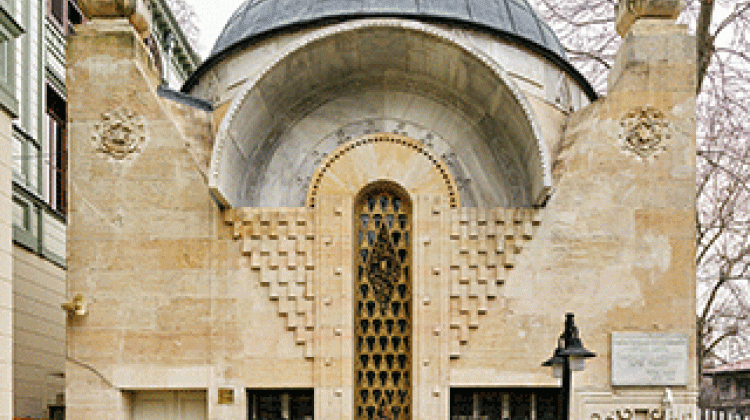THIS LECTURE HAS BEEN CANCELLED: Aga Khan Program Lecture: The Sultan's Architect Called Home: Raimondo D'Aronco Between Turkey and Italy

Mausoleum of Sheikh Zafir
Sharon Smith
AKPIA@MIT Post-Doctoral Fellow
In person only, will not be accessible remotely. Register here.
Aga Khan Program Lectures and Events
Abstract: Raimondo Tommaso D'Aronco (1857–1932), an Italian architect from Gemona del Fruli, served as the chief palace architect to the Ottoman Sultan Abdülhamid II in Istanbul for sixteen years. He became so after the Sultan requested the Italian government send an architect to design an exhibition marking the Sultan’s twenty years of rule. An earthquake in 1894 put an end to the project, but D’Aronco stayed in Turkey as the first ever foreign-born palace architect.
Raimondo D’Aronco trained in an Arts and Crafts school in Northern Italy, near his home of Gemona del Furli, beforeleaving for Venice to study ornamental design at the Academy of Fine Arts. As a master builder, D’Aronco became astrong voice for modernism and the Art Nouveau style, or Stile Floreale in Italian. In Istanbul, where he worked aside such noted architects as Sarkis Balyan, D’Aronco’s style soon became a hybrid of traditional Ottoman architectural vocabulary with Art Nouveau motifs. The merging of these styles and sensibilities resulted in a distinctive and modern design.
The significance of the international, elegant, and modern designs of Raimondo D’Aronco were not unnoticed in his home of Italy. In 1901, D’Aronco was awarded the position as primary architect of The First International Exposition of Modern Decorative Arts through a juried competition, to be held in Torino in 1902. His designs reflected his diverse and international background. At the time he won the competition he was still working in Turkey as architect to the Sultan. Many of his structures reflected the architectural language he acquired in Istanbul, including the Central Rotunda for the exposition in which the domes echoed that of Hagia Sophia. For his audience, the exotic and oriental motifs added to the mystic of D’Aronco, his patron, Sultan Abdülhamid II, and faraway lands, increasing the international theme of the exhibition and intensifying the debate for a newly unified Italy’s search for a modern national style.
Bio: Currently holding a faculty post at Boston College, Sharon C. Smith is an educator, scholar, artist, and curator. Previously, she has served as an associate academic and Curator for the Middle East and Africa at Arizona State University (ASU). Smith engaged in projects at ASU with the Institute for Humanities Research, the Center for Religion and Conflict, and the School of Historical, Philosophical, and Religious Studies. She has served on numerous committeesand boards including as a Participating Expert for UNESCO’s Safeguarding of Syria’s Cultural Heritage Committee. Most recently, she served as Chair of the Endangered Libraries and Archives Committee for the Middle East LibrariansAssociation (MELA) and was named one of ten experts to the Center for Research Library’s International Collectionsand Content Group. At ASU, Dr. Smith was affiliated with the Council for Arabic and Islamic Studies and an officer in the Center for Maghrib Studies.
Prior to her work at ASU, she served as the founding Program Head for the Aga Khan Documentation Center at MIT (AKDC@MIT), a research center holding select archives of architects and scholars working in/on the Middle East. Under her tenure, AKDC@MIT won the prestigious Mohamed Makiya Prize: Tamayouz Excellence Award (Aga Khan Documentation Center, 2015-2017)). At AKDC@MIT, Smith also served as Co-Director and P.I. of Archnet, a globallyaccessible, intellectual resource, and research portal with focus on the built environment and the material and visualculture of Muslim societies writ large as well as P.I. for LayerCake, a three-axis mapping tool allowing users to map time, narrative, and space simultaneously.
Dr. Smith earned her Ph.D. from the Graduate Program in the History and Theory of Art and Architecture at Binghamton University focusing on Early Modern Italy and the Middle East. Smith has lectured and published widely on issues of documentation, digitization, and the dissemination of knowledge, as well as on art historical topics primarily focused on visual and material culture in the Early Modern Mediterranean. Her most recent publications include “Documenting Islamic Architecture: Objectives and Outcomes in a Time of War”, International Journal of Islamic Architecture, (1 January 2021), and republished in ‘Islamic Architecture’ Today: Critical Reflections on a Vast and Growing Field, edited by Daniel E. Coslett and Mohammad Gharipour, 2022; and “Of architecture, icons, and meaning: Encountering the pre- modern city”, Proceedings of CIHA (Comité International d’Histoire de l’Art), 35th Congress, Motion: Transformation (Bologna, Italy: Bononia University Press, 2021). In addition, she is guest editor for the Journal of Material Cultures in the Muslim World: Faith in Water, Water in Faith (Leiden: Brill, 2022), and co-organized a virtual roundtable with theAga Khan University, London, entitled Interrupted and restricted: Digital Humanities and Ethics in a Time of Crisis.


